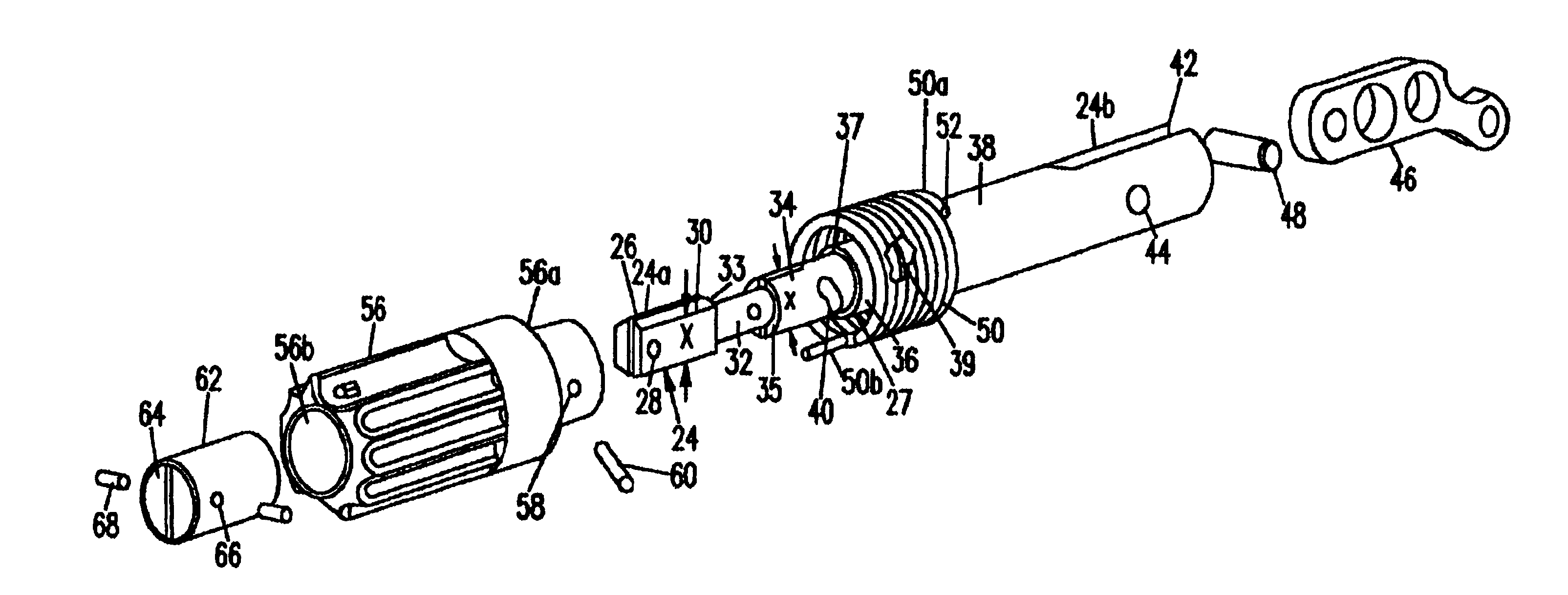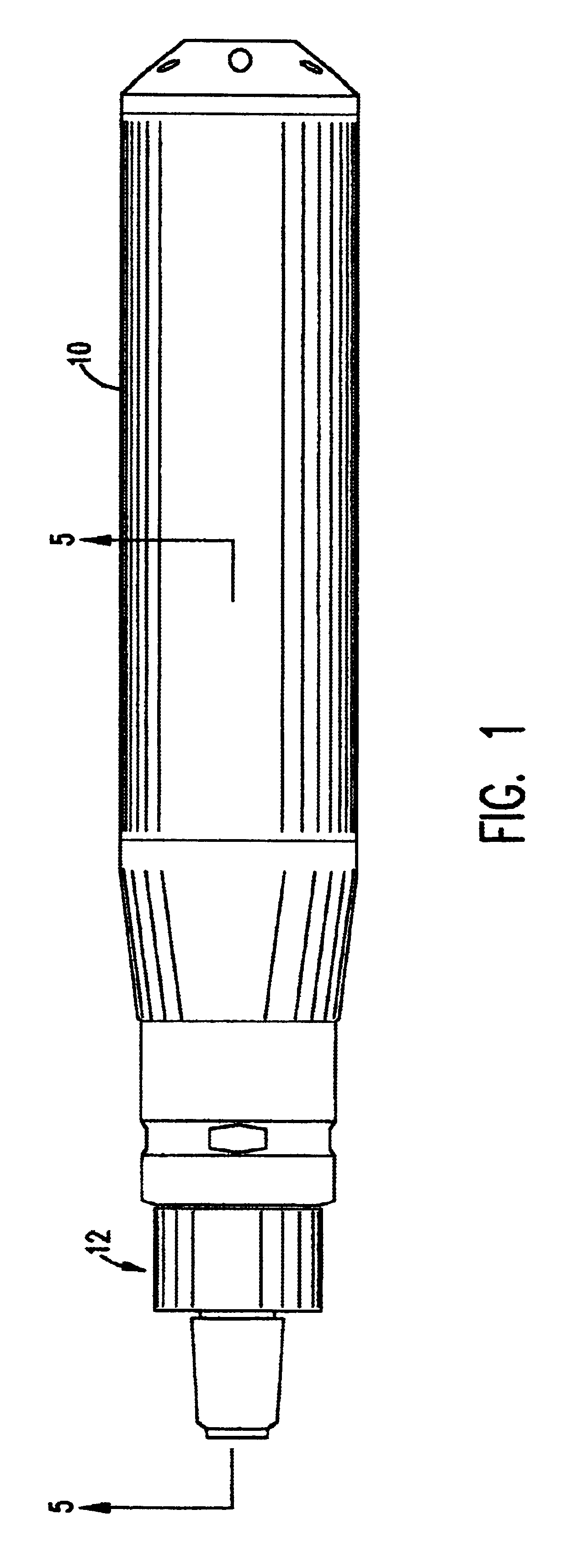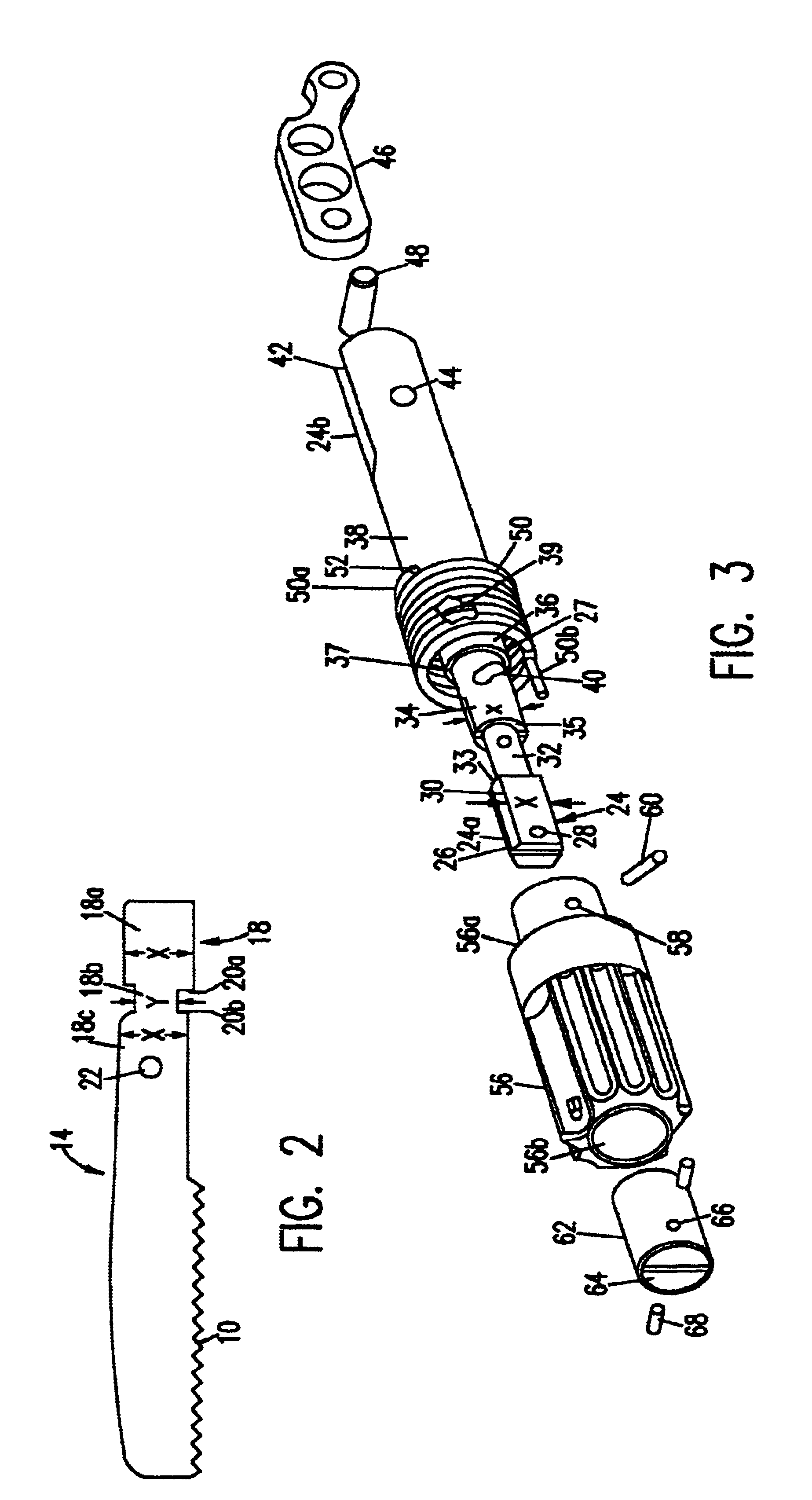Connector assembly for a surgical tool
a technology for connecting parts and surgical instruments, which is applied in the direction of manufacturing tools, metal sawing devices, mechanical devices, etc., can solve the problems of many collets that do not maintain a secure connection between the surgical tool and the housing of the surgical instrument, and the surgical instrument will not be deemed safe and effective,
- Summary
- Abstract
- Description
- Claims
- Application Information
AI Technical Summary
Benefits of technology
Problems solved by technology
Method used
Image
Examples
Embodiment Construction
The present invention is directed to a connector assembly for connecting a surgical saw blade to a housing of a surgical instrument. The connector assembly is a keyless system and is capable of connecting several types of surgical saw blades including, for example, a sternum surgical saw blade, to the housing of the surgical instrument. By using the connector assembly of the present invention, a surgeon or other medical personnel can easily align, insert and lock the surgical blade in the connector assembly of the surgical instrument without any special tools, equipment and the like. This enables the surgeon or other medical personnel to easily remove and replace the surgical saw blade during a surgical procedure. The connector assembly of the present invention also provides a stable and robust platform for mounting of the surgical saw blade, while ensuring that the surgical saw blade will remain firmly secured within the housing of the surgical instrument during a surgical procedur...
PUM
| Property | Measurement | Unit |
|---|---|---|
| length | aaaaa | aaaaa |
| movement | aaaaa | aaaaa |
| circumference | aaaaa | aaaaa |
Abstract
Description
Claims
Application Information
 Login to View More
Login to View More - R&D
- Intellectual Property
- Life Sciences
- Materials
- Tech Scout
- Unparalleled Data Quality
- Higher Quality Content
- 60% Fewer Hallucinations
Browse by: Latest US Patents, China's latest patents, Technical Efficacy Thesaurus, Application Domain, Technology Topic, Popular Technical Reports.
© 2025 PatSnap. All rights reserved.Legal|Privacy policy|Modern Slavery Act Transparency Statement|Sitemap|About US| Contact US: help@patsnap.com



